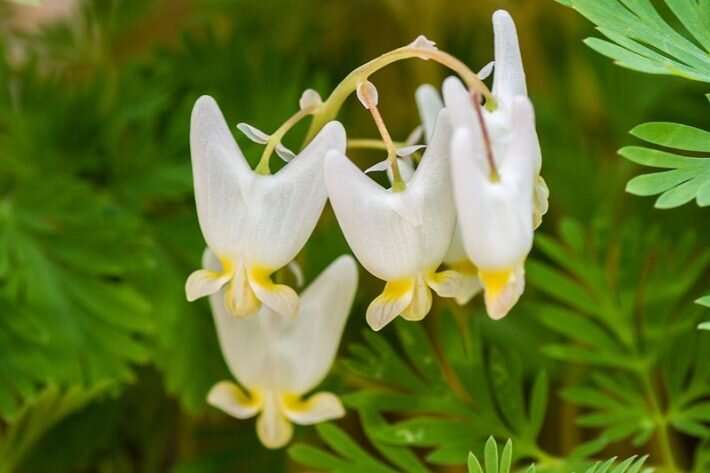Warmer temperatures are linked to mismatch among forest plants

Many plants are responding to a warming climate by leafing out and flowering earlier in the spring. However, mismatches may occur when species respond at different rates, leading to disruptions in ecological relationships.
A new study found that deciduous trees and shrubs are advancing their leaf out timing with warming temperatures faster than native wildflowers are across eastern North America. This mismatch may lead to declines in native wildflowers as they receive less sunlight for photosynthesis in the spring. The results were published in the Journal of Ecology.
Many spring-blooming native wildflowers conduct most of their photosynthesis before the canopy trees above them leaf out and shade them over. Lead author Dr. Tara Miller explains, "As temperatures warm, trees and shrubs may block sunlight from reaching the forest floor earlier in the year, leading to a shrinking time period for native wildflowers to photosynthesize with full sunlight."
The study builds on an earlier paper that used flowering and leaf out observations from Henry David Thoreau from the 1850s in Concord, Massachusetts, combined with modern observations, to show that wildflowers are less responsive to climate change than trees. The current study greatly expands the geographical scope of that previous paper.
The study assessed when 21 plant species leafed out and flowered using more than 3,000 herbarium specimens (pressed plant specimens) from across eastern North America. The timing of leaf out or flowering was then compared to historical temperature data to determine the plants' responsiveness to warming temperatures.
During cooler springs (average March/April temperature of 32掳F), native trees leafed out 15 days after native wildflowers. However, during warmer springs (average 68掳F), native trees leafed out only 8 days after native wildflowers, leaving the wildflowers about half as much time to photosynthesize with full sunlight. Dr. Mason Heberling notes that "Just a few days loss of sunlight access can mean a sizeable decrease in a wildflower's carbon energy supply."
Further, native trees and wildflowers in the warmer, southern part of their ranges advanced their leaf-out and flowering timing faster than those in colder, northern locations. "The mismatch was greater in the southeast U.S., where native wildflowers are more likely to be shaded over earlier by trees," Dr. Sara Kuebbing explains.
Native and non-native shrubs also advanced their leaf out and flowering timing faster than native wildflowers, potentially posing a shading threat to native wildflowers.
This research shows the value of newly-available digitized herbarium specimens in studying the impacts of climate change across wider spatial areas and a greater diversity of species than otherwise possible. Dr. Richard Primack emphasizes, "Prior to images of these specimens being available online, researchers would have had to travel to many museums scattered around the country."
The study highlights the impact that climate change may have by leading to mismatches between different groups of plants. The authors provide suggestions for land managers and wildflower enthusiasts, who may consider steps such as thinning overhead tree and shrub canopy, removing non-native species, and planting rare wildflowers further north to conserve native wildflower populations.
More information: Tara K. Miller et al, Warmer temperatures are linked to widespread phenological mismatch among native and non鈥恘ative forest plants, Journal of Ecology (2022).
Journal information: Journal of Ecology
Provided by Boston University



















